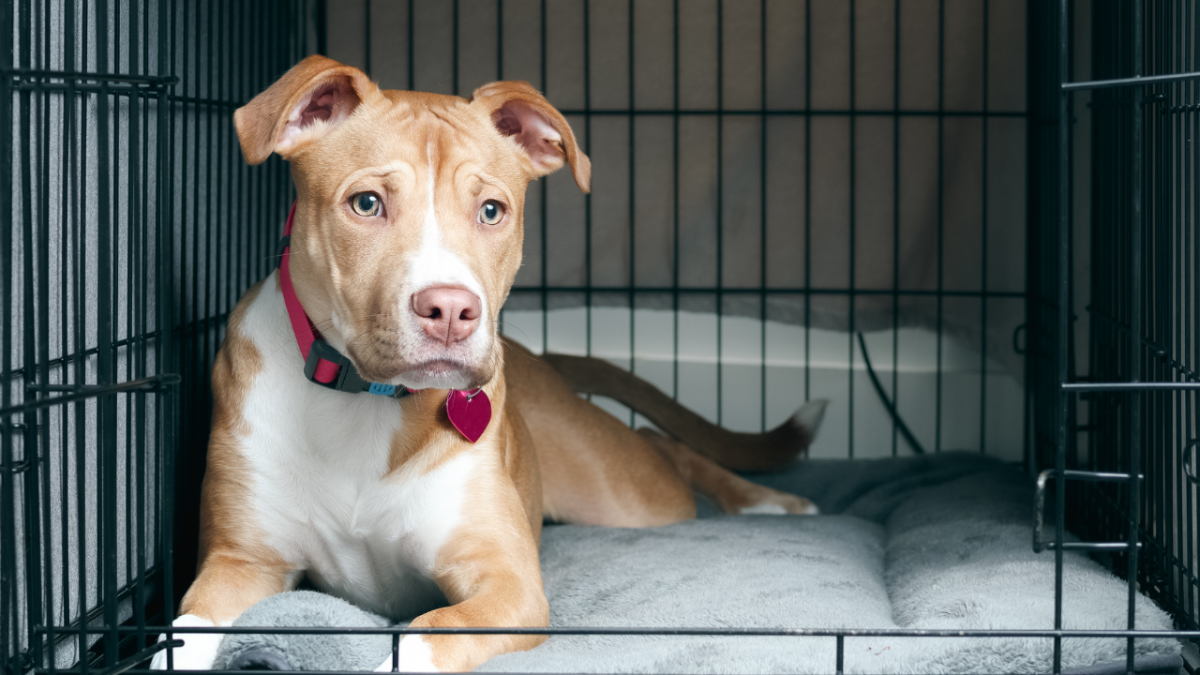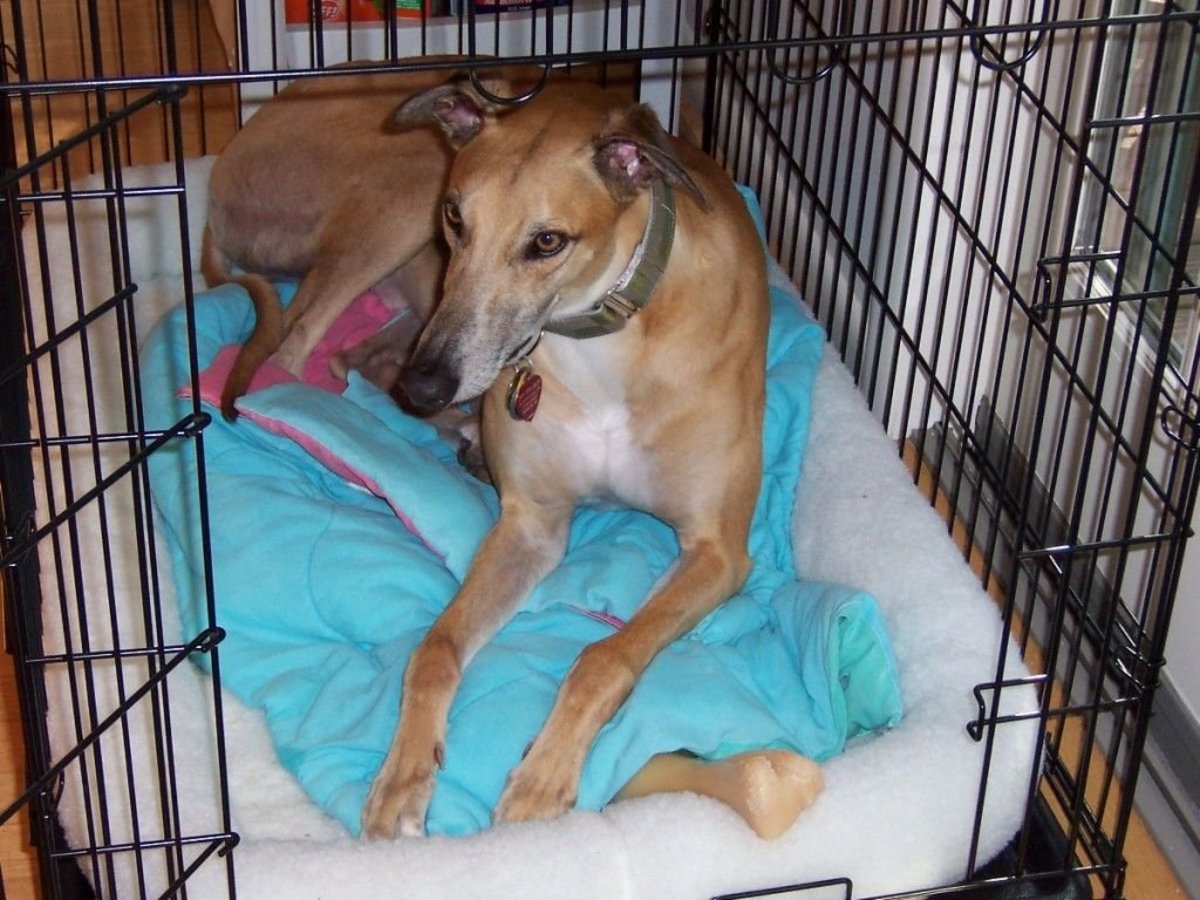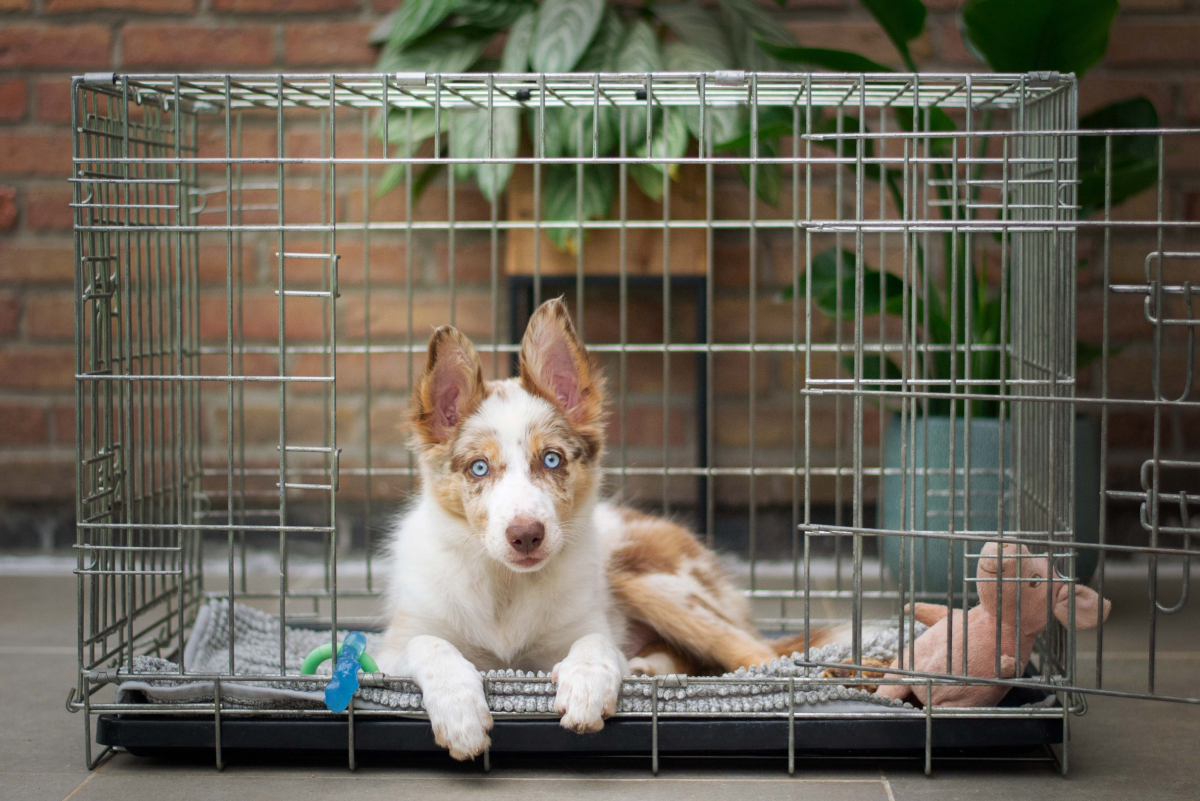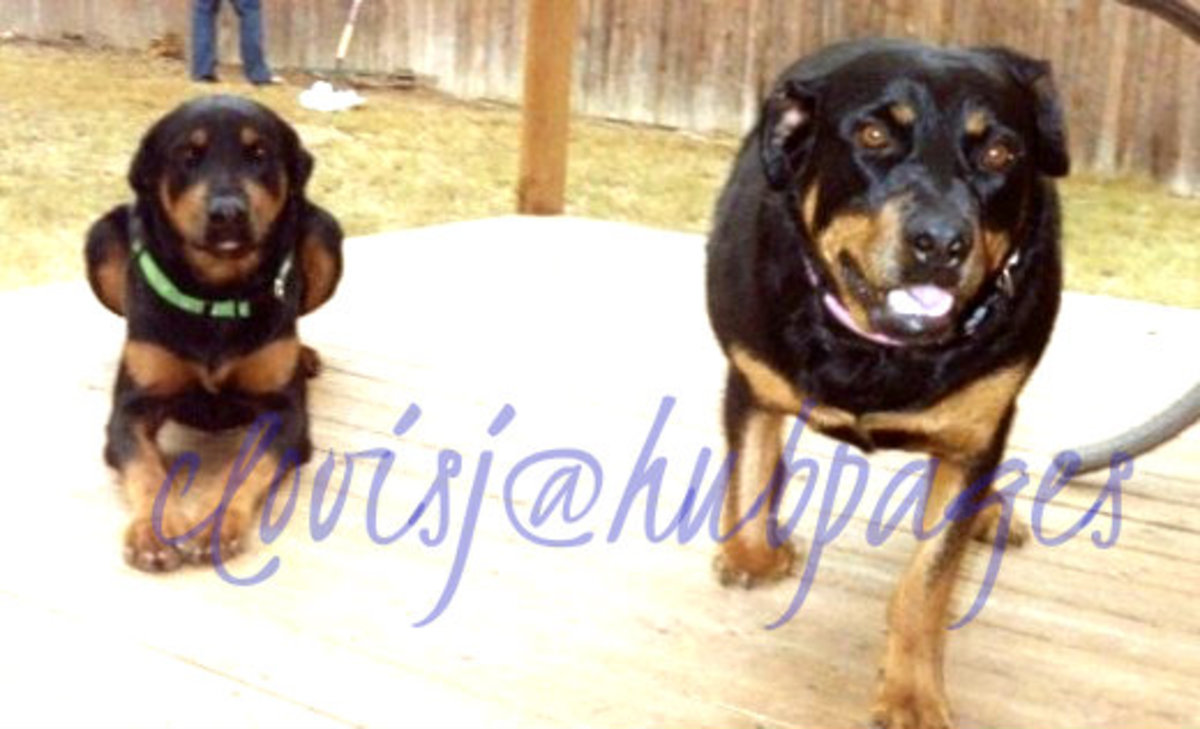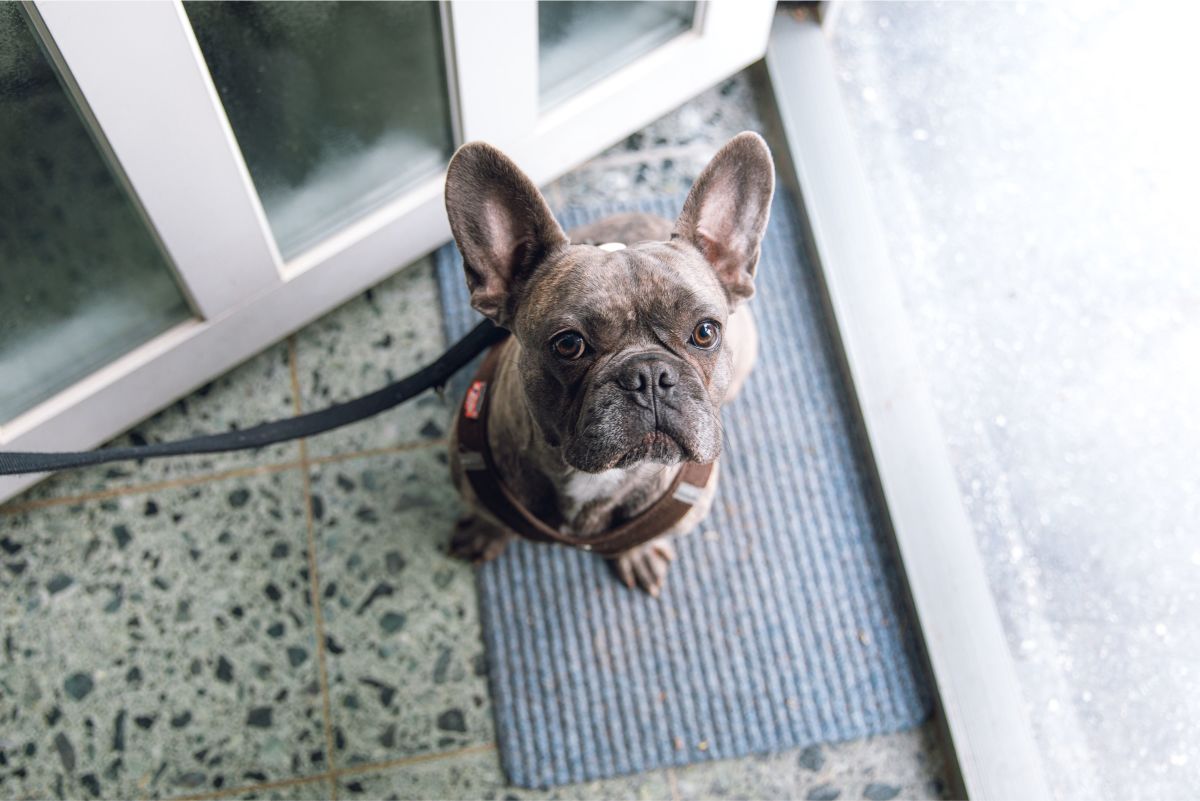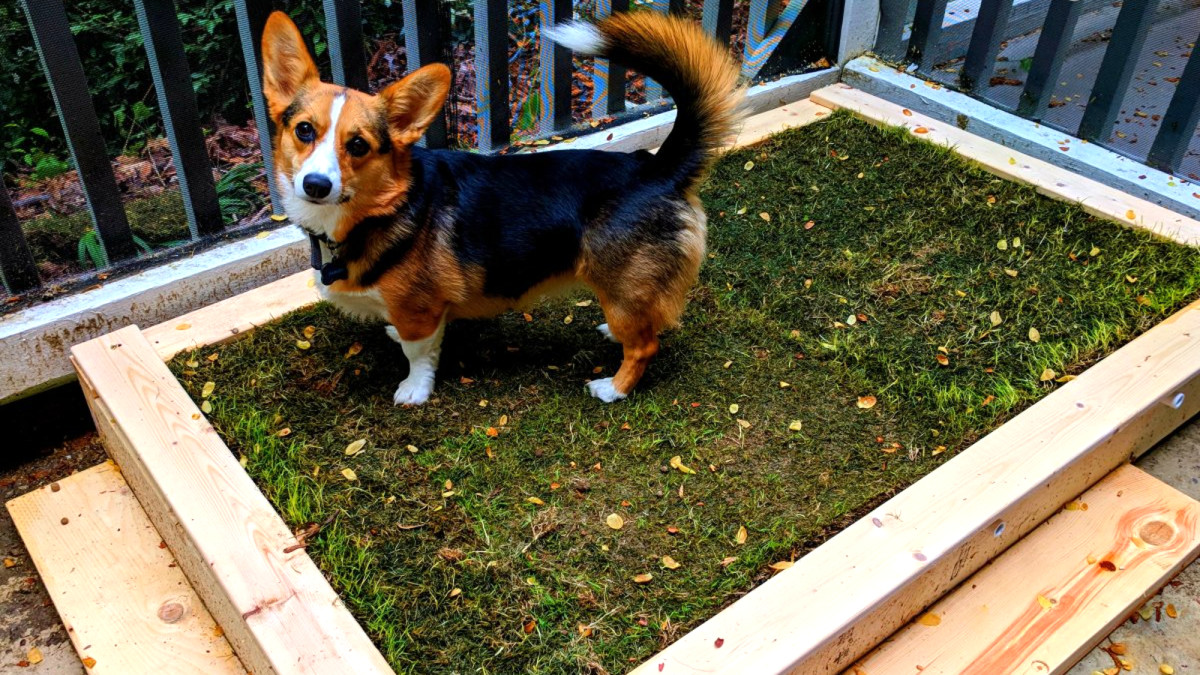How to Crate Train Your Puppy or Dog
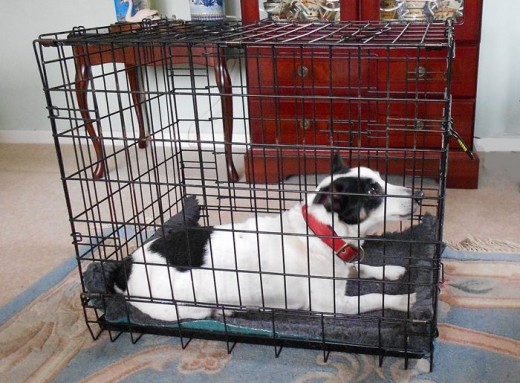
The debate about whether or not to use a crate or cage is one which arouses a lot of contention in online forums. However, from personal experience, I can tell you that if your puppy or adult dog is introduced to it in the right way, it can provide a safe haven for a nervous dog – as I have found for myself with my own dog, Bandit, who asks to go in his crate whenever he is feeling anxious or just when he wants a safe place to snooze in the sun!
In this article we are going to look at the method you could use to introduce your puppy or older dog to a crate and get him used to using it and feeling happy and relaxed in it. For a younger dog, crate training can be an important aid in house-training him. It can also ensure that your house, sofa and carpet are not damaged by any destructive behaviour when you have to go out.
Benefits of Crate Training Your Dog
Having a crate trained dog means that he can travel safely too and, if he ever needs to have his movement restricted, like after illness, accident or recuperating from surgery, if he is already happy and comfortable being in his crate, this will make his recovery much less stressful for all concerned.
In this article, we are primarily looking at how to crate train a puppy – however, the principles are the same with puppies and adult dogs and for whatever purpose you want to introduce your pet to using a crate.
Puppy Crate Training
The main reason for using crates with a young puppy, is to start a habit that increases the probability that your dog will urinate and defecate in the correct place when you are there, in order that he may be praised as well as rewarded.
All dogs like to keep their living quarters clean and need to be provided with an adequate opportunity to pee and poo in another place.
Temporarily placing your puppy within the safe confines of a crate allows you to encourage them to go to the bathroom outside, when you let them out of the crate again.
Below are some simple step by step guidelines to see you and your pet through the process with flying colors!
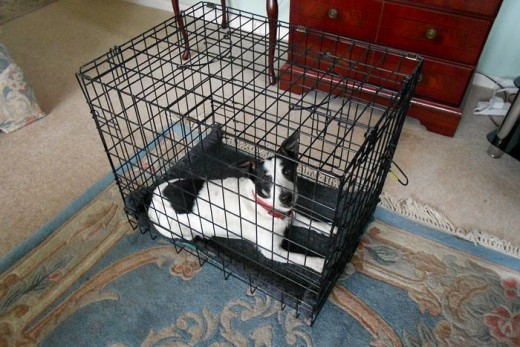
Examples of the Two Main Types of Crate Available

Select the Right Type of Crate
There are many different types of crates; a wire cage, a plastic airline crate, and mesh crate. Every type has its own advantages. The most generally used one (except perhaps, for travelling), is the wire mesh type.
Advantages of This type:
- Allows your pet to observe what is happening around him.
- Can be collapsed for easy storage as well as for portability.
- Has more ventilation compared to the plastic ones.
The plastic ‘airline’ type crate is perfect for travel. Although it is enclosed on three sides and can be a little difficult to clean, plastic crates appear especially den-like and can make puppies feel safer when they're confined inside.
A disadvantage if your dog or puppy is a ‘chewer’ is that he may chew through them and escape.
The most important thing to consider when choosing any type of crate is size. For the purposes of the process of house training, the size you choose should provide enough room for your puppy to rest comfortably and turn around.
If you choose a large crate, your puppy can use one part of the crate to rest and another part to relieve himself. If you are house training a growing puppy, a mesh crate with a movable divider is the perfect one to use, as it allows you to enlarge the crate as your puppy grows.
Making the Crate Comfortable and Appealing for your Dog
To make the crate more comfortable you could use a blanket or bedding from your dog’s normal sleeping quarters, or try adding one of your own jumpers or sweatshirts that you have been wearing to reassure your dog with your scent. Anything you place on the floor when you are using a crate to facilitate house-training, should be washable in case of accident.
Provide water
Ensure you provide access to water. For some ideas on suitable drinking water dispensers for fixing inside the crate, please take a look at my article
http://alisongraham.hubpages.com/hub/How-To-Choose-The-Best-Dog-Water-Dispenser
where there is a specific section on choosing a water dispenser bottle for placing in a crate or cage.

How To Introduce Your Pet to the Crate
Begin by placing the crate where there are people; In a place where you are working, such as the kitchen – or in a family room where the children are occupied with activities or watching TV. By placing the crate in a room where there are people, sounds and activities going on, your puppy will not associate the crate with being totally lonely and isolated.
Use positive reinforcement: Praise and reward him once he goes inside on his own.
Leave the door open to begin with: The crate door should always remain open to begin with. Allow your dog to walk in and out as he wishes. You may very well find that he chooses to put himself to bed in his crate – this is what happened with my own dog, Bandit. Once you are certain that he is completely happy with being inside, you can start closing the door for short periods.
Get your dog to associate the crate with rewards. As mentioned above, give your dog food and treats inside the crate and encourage him to go into the crate by himself when asked to do so, rewarding him when he does.
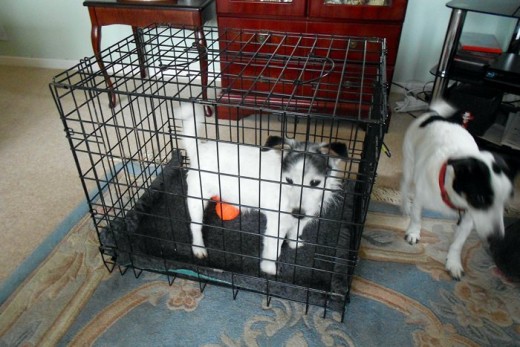
Make the Crate Appealing.
Put your puppy's favorite toys inside the crate. They should be strong and big enough that your puppy will not choke so you can safely leave him to play with them.
You could also reward the dog for going into the crate and give him a nice treat such as a juicy marrow bone or hide chew inside the crate later on during the training process so that he has something to keep himself occupied with when left alone.
Get your Dog used to Being Alone
Always be at home during the early stages. It is very important that your puppy or adult dog does not instantly link his crate to loneliness and abandonment. So don’t leave him in the crate alone until he is completely happy with being in it. It is a good idea to move from having the crate in a room where you or other members of your family are, to having it in another room where he can still hear you. This is the ‘in-between step, before you leave your pet alone.
Leaving your puppy alone for the first time
Once you are completely confident that your dog is not stressed by being left in his crate in another room, you can begin leaving him there when you go out for a short time. About 30 minutes is probably right for the first time.
Don’t ask your dog to go into his crate right before you leave the house. Give him between 5-20 minutes before you go away. Just ask him to go into the crate as usual and reward him. After that, and once he is settled, go out quietly when you're ready.
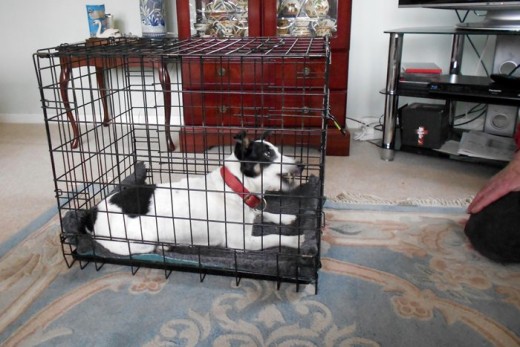
When It's Time To Let Your Dog Out of the Crate ...
Never create a big fuss when you get back home. Even if your dog is ecstatic about seeing you again, never reward this behavior by going over the top with your response to him. It is far better to sit down by the crate with him still inside and talk to him quietly in a calm and reassuring voice for a few minutes before letting him out.
If you are crate training as part of house training a puppy, it is very important to give him the opportunity to relieve himself immediately you release him.
It is a useful thing to have a phrase which you say to your dog when you want him to relieve himself. In our house, I’m afraid it’s “Wee-wees quick” but it has the desired effect and both our dogs will do so, on request before going in the car, before we are going out ourselves and immediately on our return. This saves considerable hassle – especially on car journeys! Always praise your dog when he has relieved himself and it will soon be second nature.
Do You Have Comments or Information to Add?
I hope you found my article on how to train a puppy or dog to use a crate useful. It is quite a big subject and one which, as I mentioned at the beginning, is quite emotive for some owners. I would really welcome your input in the way of additional information or tips.
On my own website www.heartwormtreatment-fordogs.com, I get lots of messages from anxious owners who find that their dog is so stressed out at suddenly having to be confined to a crate. Even if you feel you would never want to use one more than very occasionally, making using a crate a positive, enjoyable experience for the dog is a great way to avoid unforeseen problems in the future.

